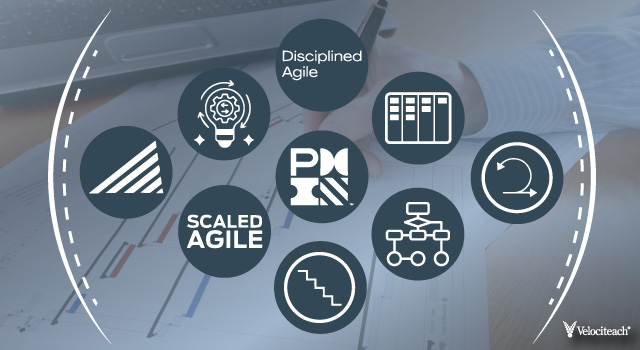Selecting a project management approach and framework is complicated. Not that long ago, it was like buying a Model-T Ford; you could have any color you wanted, as long as it was black—our only option was Waterfall.
Today Waterfall is still a choice. There are also multiple Agile frameworks, or you can mix-and-match and go Hybrid. So many choices. How do we choose?
This article describes some of the leading methodologies and when they should be used. Remember, context counts when making these decisions. Understanding the project environment is essential to success.
Waterfall
Winston Royce first documented the Waterfall as a software development methodology in 1970, when he described a highly structured, cascading development flow that resembled a waterfall. The process steps included:
- Collect system and software requirements,
- Analysis and design,
- Code
- Test, and
- Operate
Waterfall is best for projects where the cost of change is high. Its linear, sequential approach with phase gates establishes a highly controlled process. Construction projects fit this pattern. Detailed designs and plans are created, reviewed, and approved before work begins.
Waterfall made sense in the early days of computing. Hardware costs and the effort required to write software were significant. Typing out code on punch cards and waiting for the program to run was extremely time-consuming.
Lightweight Waterfall practices are still relevant for well-understood technology projects. Such as: short projects with clear requirements, enhancements to existing systems, and projects with repetitive activities and economies of scale.
Waterfall is a poor choice for complex projects with many unknowns and unpredictable interdependencies. Projects, where user feedback is required, was never a good fit for Waterfall as Royce pointed out in his article.
Lean, Kanban & Kaizen
Lean, Kanban, and Kaizen are quality improvement philosophies rooted in the Lean Manufacturing Movement pioneered by Toyota. Their lessons and principles are foundational to many modern management practices, including Agile.
Lean
The goal of Lean is delivering value and eliminating waste. Our customers define what is valuable—everything else is waste. Unused features, waiting, unnecessary process steps are all examples of waste.
Six-Sigma, Lean Six-Sigma, and Value Stream Mapping are practices derived from the Lean principles. Six-Sigma and Lean Six-Sigma focus on statistical process control to identify and resolve systemic quality issues.
Value Stream Mapping is a way to understand our customers’ journey. We map the process, identify delays (a form of waste), and steps that do not add value. Value Stream Mapping can yield deep insights that improve the customer experience, speed delivery, and eliminate unnecessary work.
Kanban
Kanban creates and maintains a continuous flow of work. It uses practices such as, workflow visualization, pull, and reducing work in process. The practices reduce multi-tasking and eliminate bottlenecks which are both forms of waste.
Kanban is always a good choice! It can be used to manage operations, or the work for Waterfall and Agile projects teams. Operations or projects executing repetitive steps will benefit from Kanban by speeding the delivery of value.
The Kanban board visually depicts the flow of work and promotes transparency, accountability, and collaboration.
Kaizen
Kaizen is a Japanese quality philosophy that translates to “small change for good.” The essential elements include:
- Build quality in;
- Democratize quality improvement;
- Examine the whole system to resolve systemic problems; and
- Recognize improving quality ongoing—we can always get better.
Kaizen principles are foundational to all Agile frameworks. The Agile Manifesto’s Principles, the Scrum Retrospective, and the SAFe House of Lean all enshrine continuous improvement.
Scrum
Scrum is the most popular Agile methodology with its roots in software development. It combines incremental and iterative delivery to address complex, adaptive problems.
Scrum is well-suited for projects where customer feedback is critical, the cost of change is low, and the solution is emergent. Small increments (minimum marketable features) are developed and demonstrated to customers.
The typical Scrum iteration is 2-weeks. These rapid cycles allow changes to be quickly incorporated into future releases. Rather than having fixed requirements, the product backlog is an evolving, prioritized list. The team works down the list, so it is always working on the most important items.
Scrum’s popularity is attributed to its simplicity and low barrier to entry. Teams can begin using the framework with minimum training. The Scrum Guide notes Scrum “is easy to learn but hard to master.” It is a lightweight methodology with core roles, ceremonies (processes), and artifacts. Scrum is intentionally incomplete, compelling teams to customize practices for their context.
Scrum has two critical roles that require experienced individuals, the Product Owner and Scrum Master. The Product Owner is the voice of the customer. The Scrum Master facilitates the ceremonies, helps the team mature, and works externally to coach the organization.
Scaled Agile (SAFe®)
The Scaled Agile Framework (SAFe) builds on foundational team-based Agile practices such as Scrum, Kanban, and XP to address large, complex programs. As Dean Leffingwell (the creator of SAFe) says, “nothing beats an Agile team, except a team of Agile teams.”
SAFe is an extensive framework. Initially, it may seem overwhelming. “SAFe Distilled” is over 300-pages long as compared to the 14-page “Scrum Guide.” SAFe is well-documented, comprehensive, and provides clear guidance on implementing its practices. The SAFe website, is an excellent online knowledge base and is completely free.
Applying cadence and synchronizing planning are two distinguishing characteristics. All teams on an Agile Release Train (ART, a SAFe program) come together for a 2-day planning meeting each quarter to establish goals for the next program increment and coordinate activities. Then, the Agile teams then deliver, integrate, demonstrate working solutions every 2-weeks. The entire program increment is delivered and reviewed by the customers just before the next quarterly planning meeting.
There are few alternatives to using SAFe for managing large, Agile programs. SAFe is the most popular scaling methodology with about 35% market share, and “I don’t know” is number two. The Scaled Agile Institute® has a comprehensive program for organizations adopting the framework that includes both team and role-based training.
Disciplined Agile
Disciplined Agile (DA) is a methodology agnostic toolkit providing process options and considerations to improve project delivery. It supports teams using Scrum, Kanban, SAFe, and Waterfall practices. Core principles state that context counts, and making informed choices is good.
The toolkit decomposes projects into 3-phases inception, construction, and transition; and the ongoing work of building and maturing the team. Two-dozen process goals with over a hundred decision points guide project execution. A curated list of options and considerations
enable better decision-making.
Disciplined Agile is best suited for large enterprises and will be welcomed by experienced project delivery teams. The decision points and options document the tacit knowledge of experienced project professionals. Leveraging this guidance allows teams to mature more quickly and predictably.
© 2021, Alan Zucker; Project Management Essentials, LLC
See related articles:
- Create Value: Map the Value Stream
- Disciplined Agile: To Agility and Beyond
- Eliminating Waste in Knowledge Work
- Going Agile
- Kanban 101: Improving How We Work
- Making Sense of Agile and DevOps
- Scrum vs. Kanban: What to Choose?
To learn more about our training and consulting services, or to subscribe to our Newsletter, visit our website: https://pmessentials.us/.

